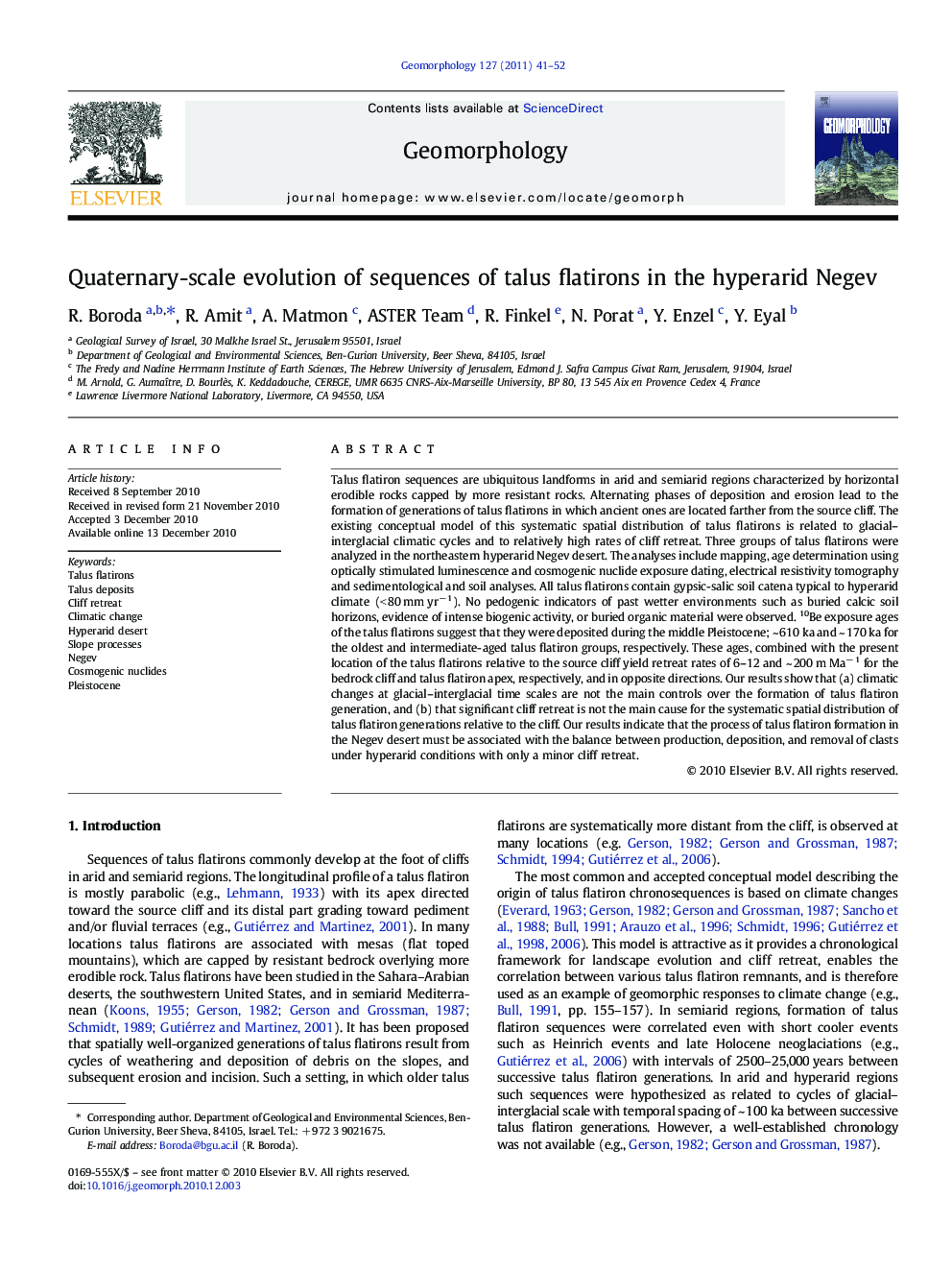| Article ID | Journal | Published Year | Pages | File Type |
|---|---|---|---|---|
| 4685708 | Geomorphology | 2011 | 12 Pages |
Talus flatiron sequences are ubiquitous landforms in arid and semiarid regions characterized by horizontal erodible rocks capped by more resistant rocks. Alternating phases of deposition and erosion lead to the formation of generations of talus flatirons in which ancient ones are located farther from the source cliff. The existing conceptual model of this systematic spatial distribution of talus flatirons is related to glacial–interglacial climatic cycles and to relatively high rates of cliff retreat. Three groups of talus flatirons were analyzed in the northeastern hyperarid Negev desert. The analyses include mapping, age determination using optically stimulated luminescence and cosmogenic nuclide exposure dating, electrical resistivity tomography and sedimentological and soil analyses. All talus flatirons contain gypsic-salic soil catena typical to hyperarid climate (< 80 mm yr− 1). No pedogenic indicators of past wetter environments such as buried calcic soil horizons, evidence of intense biogenic activity, or buried organic material were observed. 10Be exposure ages of the talus flatirons suggest that they were deposited during the middle Pleistocene; ~ 610 ka and ~ 170 ka for the oldest and intermediate-aged talus flatiron groups, respectively. These ages, combined with the present location of the talus flatirons relative to the source cliff yield retreat rates of 6–12 and ~ 200 m Ma− 1 for the bedrock cliff and talus flatiron apex, respectively, and in opposite directions. Our results show that (a) climatic changes at glacial–interglacial time scales are not the main controls over the formation of talus flatiron generation, and (b) that significant cliff retreat is not the main cause for the systematic spatial distribution of talus flatiron generations relative to the cliff. Our results indicate that the process of talus flatiron formation in the Negev desert must be associated with the balance between production, deposition, and removal of clasts under hyperarid conditions with only a minor cliff retreat.
